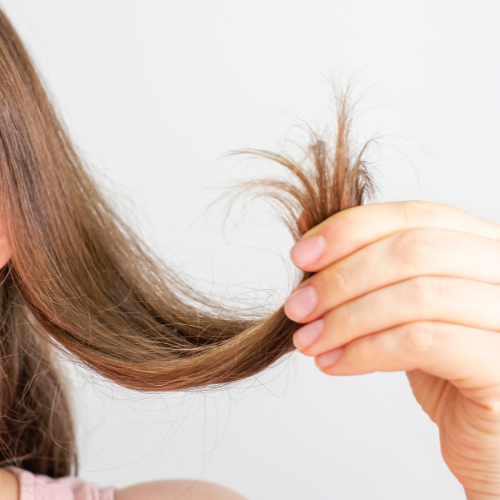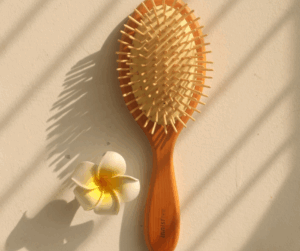We invest in good shampoos, conditioners, and treatments, but often, the most overlooked tool in our hair care arsenal is right in our hands: our hairbrush. Brushing seems simple, but using the wrong brush or improper technique can contribute to significant breakage, frizz, and even damage to your scalp.
If you’ve been noticing more strands in your brush than usual, or if your hair feels brittle and weak, it might be time to reconsider your brush choice. The good news? There’s a brush out there for nearly every hair type designed to detangle gently and support healthier, stronger strands.
Let’s dive into the best brushes to help minimize breakage and keep your locks luscious!

Why Your Current Brush Might Be Causing Damage
Common brushes with stiff bristles can be culprits. They might:
Tug and pull: Hair is most fragile when wet – up to 50% weaker due to increased elasticity and cuticle swelling [1, 2]. Aggressive brushing on wet hair can easily lead to snapping.
Create friction: Some bristles generate static, potentially leading to frizz and weakening the hair shaft [3].
Ineffective detangling: Instead of separating knots, some brushes push them further down, creating worse tangles and damaging the hair cuticle [4].
The Right Brush for Less Breakage
Choosing the best brush depends on your hair type and whether it’s wet or dry.
1. The Wet Detangler: Essential for Post-Shower Hair
Wet hair’s vulnerability makes a specialized wet detangling brush a valuable addition to your routine [1, 2, 3].
How it works: Flexible, widely spaced bristles glide through knots without excessive pulling, minimizing tension.
Best for: All hair types, especially fine, fragile, easily tangled, and curly hair.
Our Picks:
The Wet Brush Original Detangler: (Great value on Amazon) A leading choice for painless detangling.
Tangle Teezer The Ultimate Detangler: Popular for its two-tiered teeth technology that aims to detangle and smooth.
Denman D3 Original Styler 7 Row Brush (for curly hair): A staple for curly and coily hair, often used wet with conditioner to help define curls and detangle gently.
2. The Boar Bristle Brush: For Shine (Dry Hair)
Once hair is dry, a boar bristle brush can be excellent for shine and scalp health.
How it works: Natural boar bristles gently distribute your scalp’s natural oils from root to tip, potentially adding shine, reducing frizz, and naturally conditioning your hair without pulling [4].
Best for: Fine to normal hair, straight or wavy.
Our Picks:
Mason Pearson Hair Brush: A premium option known for distributing oils and adding shine.
EcoTools Slick Back Smoothing Hairbrush: Made with vegan boar bristles and a bamboo handle, this brush helps distribute natural oils for a smooth finish while being an eco-friendly choice.
3. The Wide-Tooth Comb: The Ultimate Gentle Detangler
Sometimes, the simplest tool is best, especially for very wet or fragile hair [1, 2, 3].
How it works: Wide-spaced teeth prevent snagging and pulling, ideal for gently working through knots.
Best for: All hair types, especially curly, coily, or extremely tangled hair, primarily when wet with conditioner.
Our Pick:
Plastic Wide Tooth Comb: Many effective and affordable options are available. Look for smooth, rounded teeth.
Quick Brushing Tips to Help Prevent Breakage
No matter your brush, technique is crucial:
Start from the ends, always: Never begin at your roots. This pushes knots down. Gently work from ends upwards [2, 3].
Be gentle with wet hair: It’s weakest when wet. Use a dedicated wet detangler or wide-tooth comb.
Avoid excessive brushing: Overly aggressive brushing can cause friction and damage [4]. A few gentle passes are often enough.
Clean your brush regularly: Remove hair and wash weekly to prevent grime transfer and maintain effectiveness.
The Takeaway
Choosing the right hair brush and using proper techniques can significantly reduce breakage. By understanding your hair’s needs and using tools designed to be gentle, you can support healthier, more beautiful hair. Happy brushing!
References
1. Hair Health Essentials. “The Hidden Dangers of Brushing Wet Hair: Why Your Hair is 50% Weaker When Wet and How to Protect It.”
2. Byrdie. “Wait—Is it Bad to Brush Your Hair When It’s Wet?”
3. Margaux Salon. “Stop Damaging Your Hair: When to Use a Brush vs Comb (Expert Guide).”
4. HairClub. “When It Comes to Thinning Hair, Which Brush You Use Matters.”
5. ResearchGate. “A study of damaged hair.”


 The 5-Minute Mood Boost: Simple Practices for Instant Positivity
The 5-Minute Mood Boost: Simple Practices for Instant Positivity